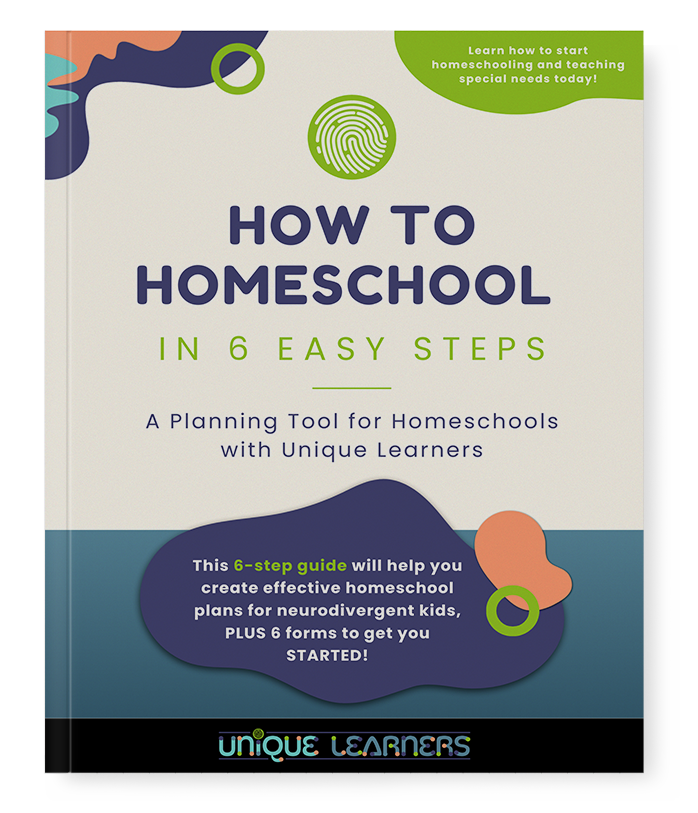Executive Function Skills is a buzz word term in recent years. Parents of kids with special learning needs are often told by teachers, psychologists, OT therapists, and other professionals that their children lack executive function skills. Kids with ADHD, autism, dyslexia, and other learning issues have various difficulties with eight common executive functions.
But…what are these executive function skills?
This article will mainly focus on explaining what the 8 most common executive functions skills are. Regardless of learning difficulties or not, you will likely notice that each of your children have strengths in some of the skills and weaknesses in others. This individualized mix of executive functions is part of what makes each person a unique learner!
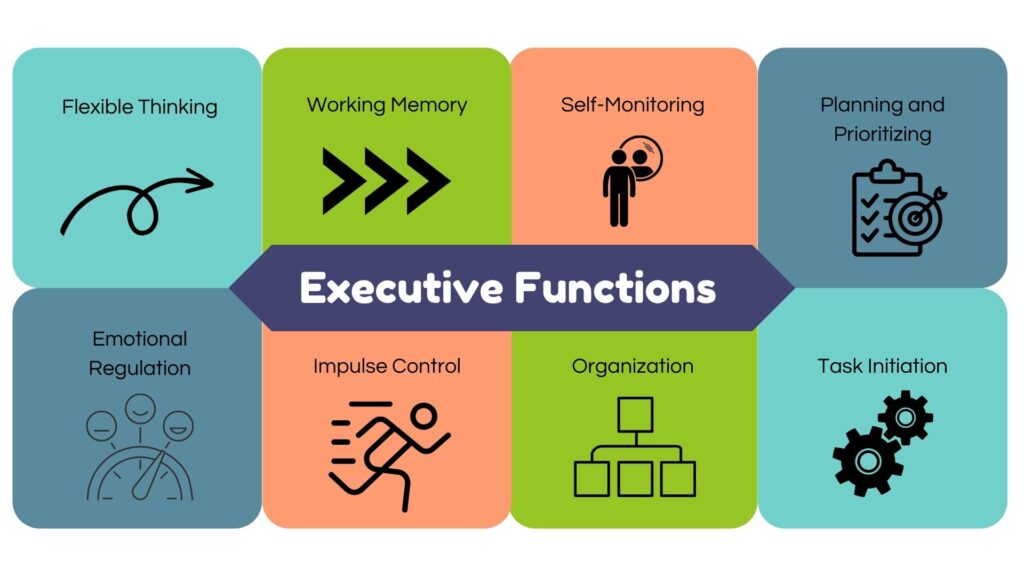
I could certainly write a whole article about each of the executive functions and how to help each one. If you have a child who needs help in one or more of these skills, feel free to message me at sueh@uniquelearners-suehegg.com and I will be happy to share recommendations to build stronger individual executive functions.
Flexible Thinking
Some adults brag about being able to multitask; however, it is now known that our brains are really only able to focus on one thing at a time. What may seem like multitasking is actually called “shifting,” which is the ability to switch quickly from one idea to another or one task to another. Shifting is one part of having skill in flexible thinking. Flexibility is also one way creativity happens.
Flexible Thinking involves being able to apply concepts from one area to another.
For example, subtraction can mean “take away.” Helping kids to see that we can also use subtraction to compare two things or to fill something to capacity involves flexible thinking.

Adults who are required to change a strategy or model may need to alter how they think about a situation. We call a big change in strategy or model a paradigm shift. An example of a paradigm shift was when kitchen designs change from a galley layout to an open concept with an island. In a larger corporation, a shift from a top-down authority structure to a flat, collaborative structure would be a huge paradigm shift that may be welcome, but could leave workers feeling unsupported. Most people, including adults, may have resistance to large paradigm shifts.
Unfortunately, many kids with special learning needs have extreme difficulty with concept development because they just can’t make the paradigm shifts. This is one reason seasoned homeschool parents suggest “de-schooling” to new homeschoolers whose children have been in a classroom school setting for a few years. Even neurotypical kids can have difficulty with this big change in how learning happens.
Some students with learning issues have trouble accessing the associative hooks or background knowledge needed to relate to new concepts. Some kids also have difficulty with any change that requires flexibility in thinking, including very small changes to routines, ideas, activities, people, environment, and more!
Two examples of the need for flexible thinking for younger elementary students are: switching between addition and subtraction problems or recalling the vowel sounds between a closed syllable CVC word and one that has a silent e at the end of the word. Simply applying a short-term accommodation can help kids build the flexibility they need to master a concept or skill.
Working Memory
Working Memory is often used synonymously with short-term memory. Although they are related, working memory and short-term memory aren’t exactly the same.
Short-term memory is the ability to hold a small amount of information temporarily.
Most people, including kids, are able to hold up to 7 discrete items in short-term memory. That’s why phone numbers used to be 7 digits long. When area codes started to be included in a phone number, people started to do more “chunking” of the parts of a phone number because chunks of information are perceived by the brain as one piece.
Working memory is the ability to use items held in short-term memory, retrieve stored long-term memory, and utilize the information to make predictions and decisions.
For example, when playing chess a person already knows how the pieces move and a repertoire of strategies from playing previous games. Once the game starts, the player has a short-term memory of the moves already made and a perception of the skill of the opposing player. Using the stored long-term knowledge and the new short-term information, the player can use working memory to make decisions about the next moves and predict what needs to be done to reach “Check Mate.”
One example of using working memory in academics is learning the process of long division. The student must have multiplication facts or the list of multiples and a concept of the role of operations stored in long-term memory, hold the sequence of steps in short-term memory, and them together to predict the quotient, subtract, and examine the answer for a logical and accurate outcome.
Self-Monitoring
A fancy educational term is metacognition, which means an awareness of our own thinking. Metacognition is another way to name the brain skill that allows us to self-monitor our actions.
Self-Monitoring is the self-awareness to keep ourselves actively engaged in a task or to check if we are understanding.
One example is when a person reads a passage and realizes that there was no comprehension because their mind was wandering about a small issue at the coffee shop earlier in the day when the order wasn’t filled correctly. So the person reads the passage again, this time focusing on the main idea and details more closely. That issue with reading comprehension may have been a conflict between a boring passage and a personal event. The self-monitoring or metacognition was the awareness of the need to reread.
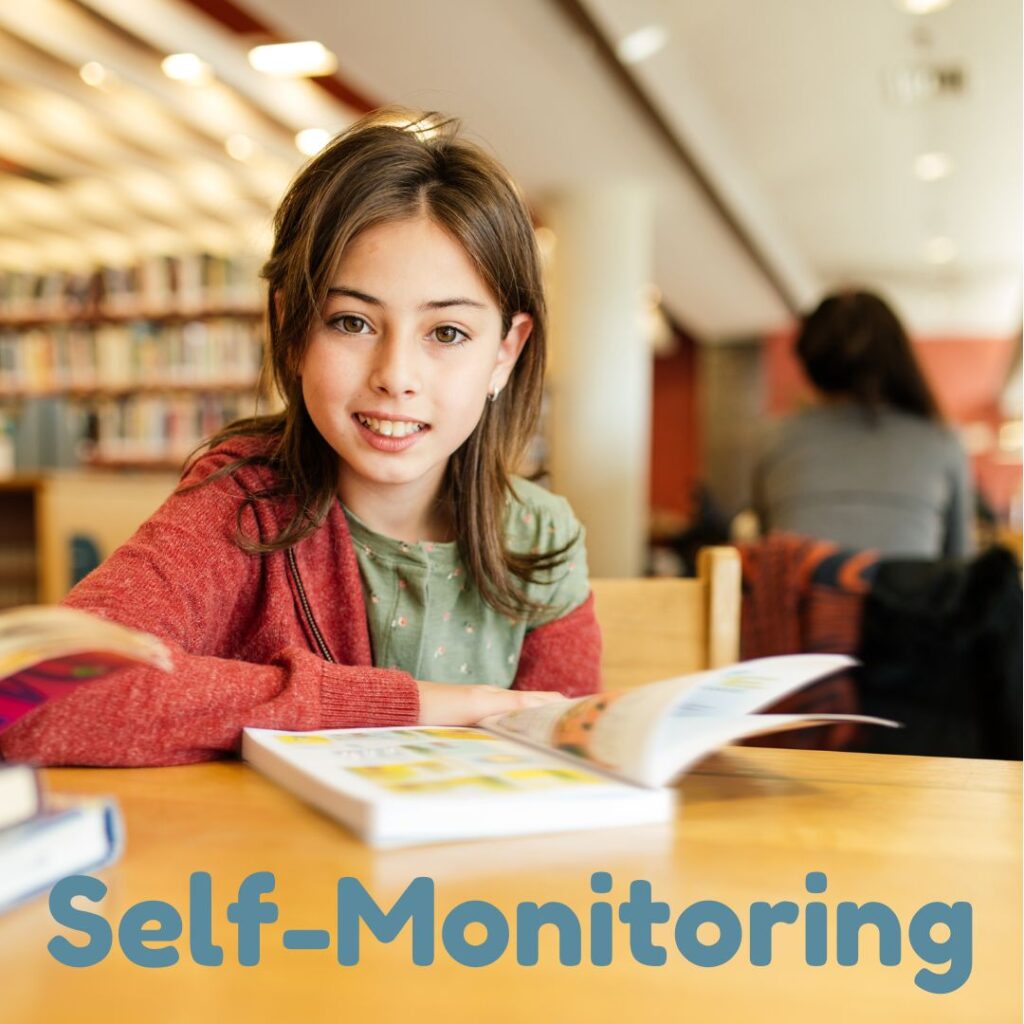
Neurotypical children are usually able to self-monitor around 3 years old, and can utilize self-monitoring in solving problems around age 4.
Of course, kids with neurodivergence of any kind are likely to have difficulty with self-monitoring in some areas of life or learning. At first, that means we have to assist in monitoring their behavior and learning progress for them. As kids with learning issues develop more skills, it is possible to train kids to self-monitor.
Planning and Prioritizing
Homeschool moms tend to be researchers, readers, and risk-takers. Homeschool moms also tend to be planners. Even if you don’t keep a lesson plan book, you likely plan what curriculum you want to use, plan a routine for your homeschool day, and plan fun activities to keep your kids learning. Relinquishing the planning control can be more difficult for homeschool moms, but we want to lead our children into knowing how to plan and prioritize so they have the skills needed to get a job, get to work on time, and efficiently run their own household some day.
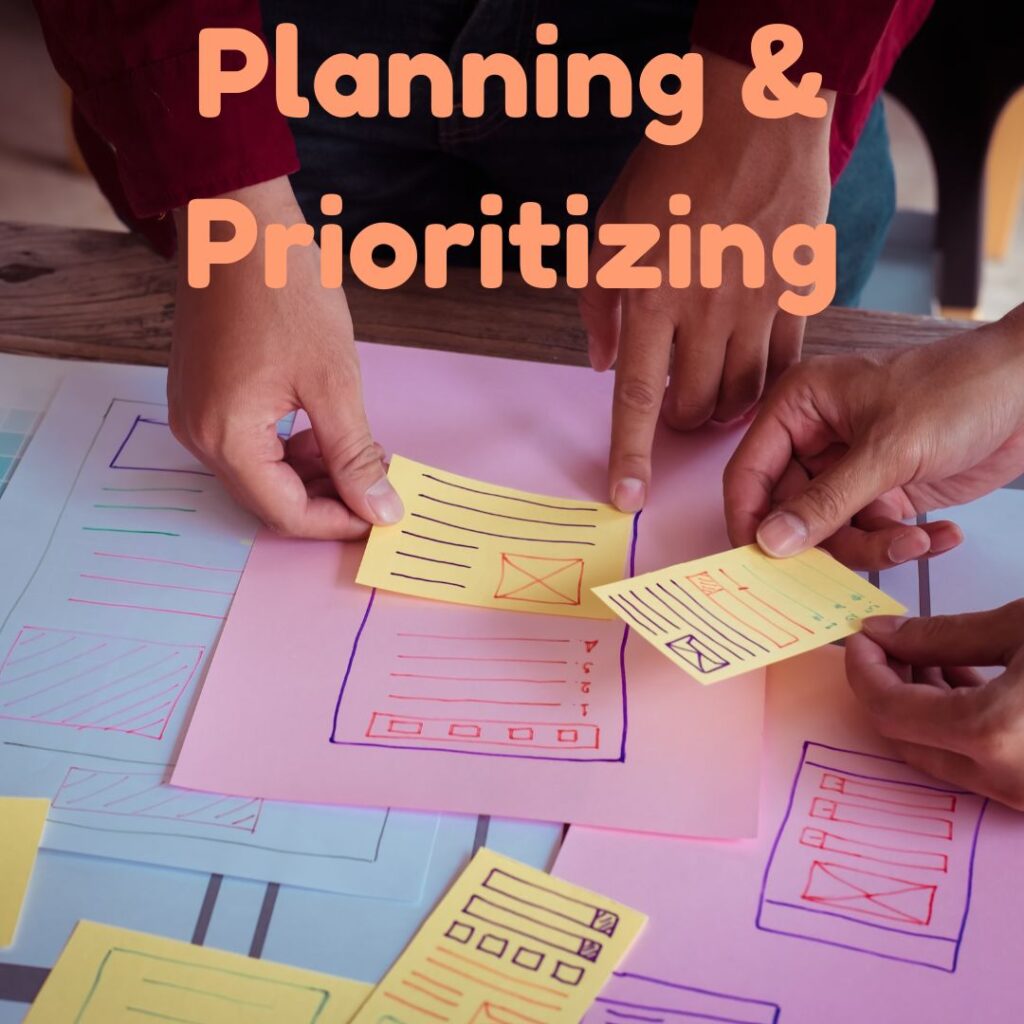
Planning is thinking ahead for what needs to be done in a specific time frame.
For homeschool kids, planning can involve checking off a checklist of assignments to be completed independently, or planning can be thinking through the materials needed to do a project. Planning could also include assembling their sports equipment or practicing an instrument for a performance or cooking a meal. Homeschool parents can help train young children to think ahead about what they will need to be responsible for by having a morning family meeting to go over expectations of the day.
Prioritizing involves arranging the tasks so that the most important activities are completed in a logical order.
Prioritizing means placing any sequence in an order of importance. This could involve writing the detail sentences of a paragraph in a specific order to make a point of priority. Sometimes we do the least and shortest tasks first to reserve more time to do more important things. Other times we must do the most valued tasks first.
For high schoolers planning and prioritizing could involve making a list to complete their weekly school work in four days so that a club camping trip can be prioritized for a long weekend.
Task Initiation
You may have a kiddo who seems to need permission to start working on an assignment every. single. time. Some kids can start if an adult is watching. Some kids need you to sit right next to them and say, “You can start now.” This is an executive function skill that may seem easy and obvious to most adults, but for a child with frontal lobe issues, starting a task may be not be so apparent.
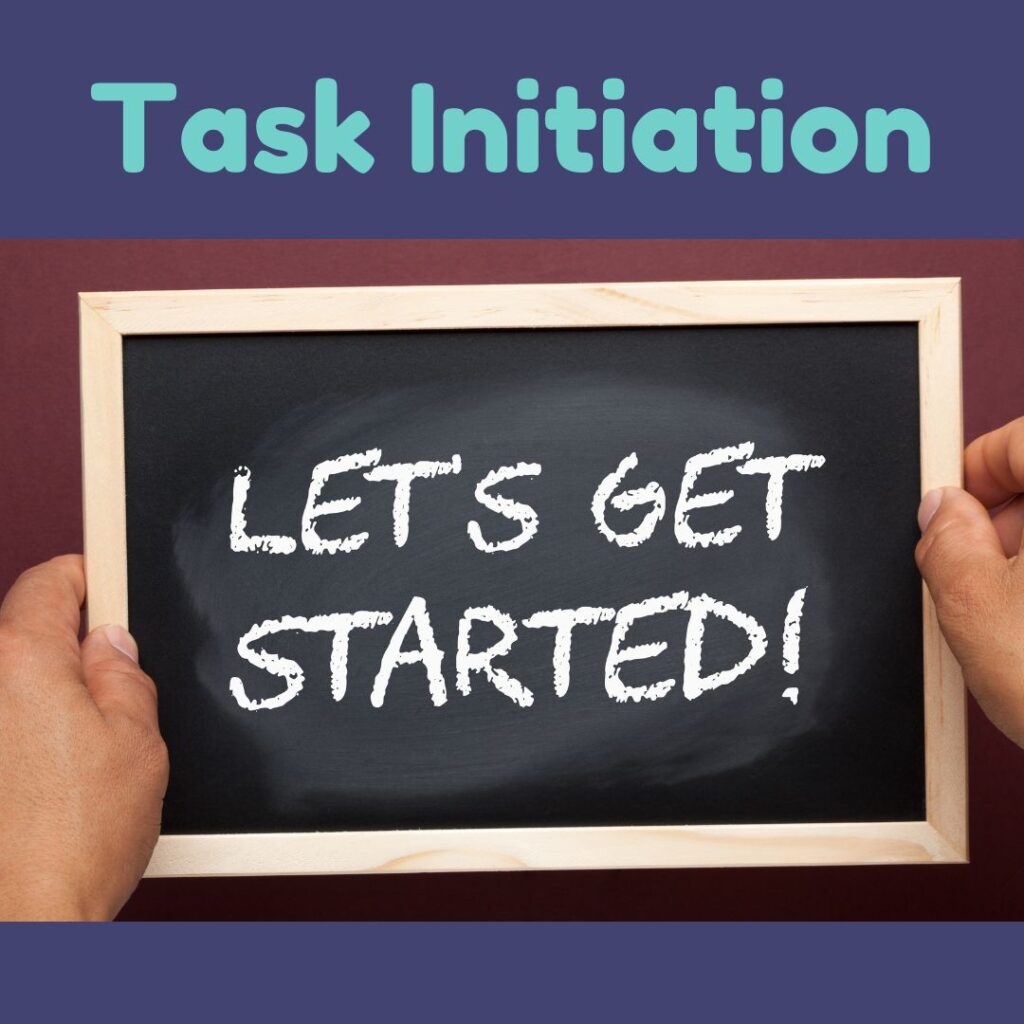
Task Initiation is the ability to get started.
Also, some kids who have been in a classroom setting may have learned to wait until the teacher announces independent work time and directs students to begin working on an assignment. Many homeschools are more free-flowing and require students to show more initiative. If this is your first year homeschooling, you will likely need to directly explain your expectations and encourage them to use their freedom to learn in a way that works in your routine.
Organization
Thinking in categories and details translates to academic performance in spelling patterns, reading comprehension, math concepts and facts, writing sentences, writing paragraphs and eventually essays, and recalling content knowledge in social studies and science.
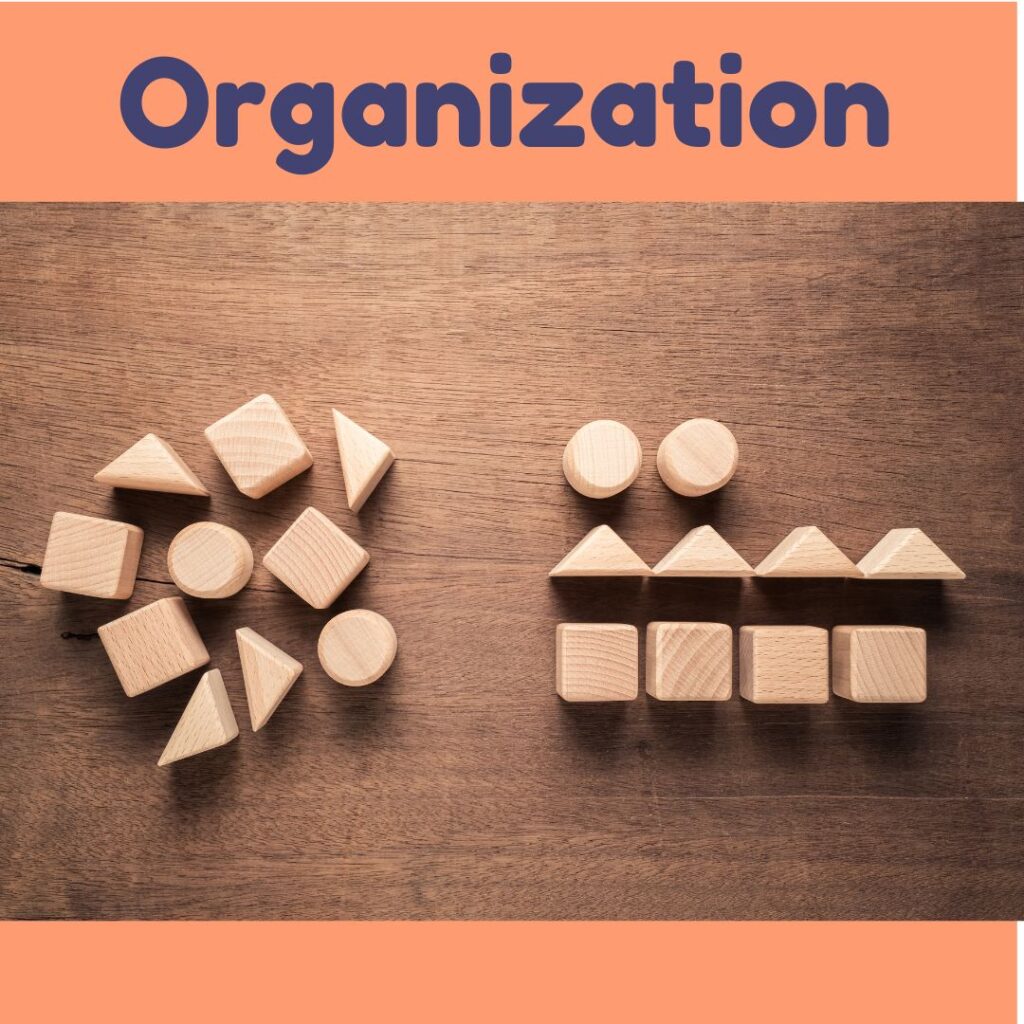
Organization involves arranging stuff, as well as being a thinking process for categorizing, storing, and retrieving information.
I’m going to take a risk and say that students with all learning issues require explicitly learning organizational skills for taking care of both stuff and ideas. For sure, lack of organizational skills are some of the underlying issues associated with dyslexia, ADHD, and autism.
Impulse Control
Impulse Control is more than having knowledge of how to behave in certain situations, what the rules are in an environment, or having common sense about actions needed.
Impulse Control is regulating those actions to be productive and cooperative with other people.
Sometimes impulse control is called self-control or rule governance or action regulation.
Impulse Control is the ability to think before acting.
Impulsivity is a hallmark characteristic of ADHD. Impulsivity is one of the criteria associated with attention-deficit/hyperactivity disorder. Excessive movement, fidgeting, or acting as if “driven by a motor” go hand-in-hand with impulsivity. If you ask a child who struggles with impulsivity to recite classroom or household rules, the child may be able to recite the rules as if reading them from a poster. Or the child may be clueless that there are any rules to follow.
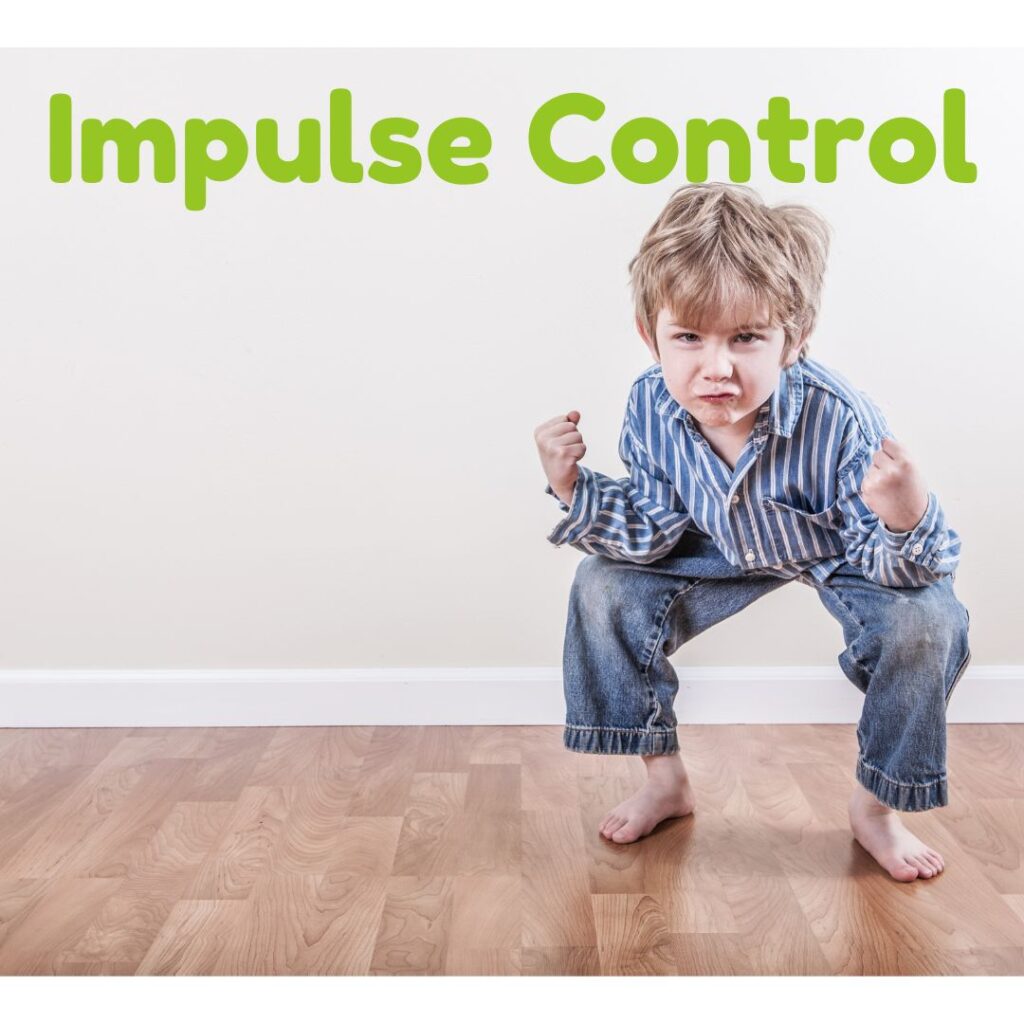
If you are homeschooling an impulsive child, there are ways to help improve impulse control. The training takes consistency and loads of patience, but the results can be a having a homeschool where the child is thriving and can learn.
By the way, impulse control training does NOT involve having a child sit at a desk or table for many minutes or hours to complete worksheet after worksheet. Impulse control does involve training compliance and self-monitoring. If you struggle in homeschooling a child who has issues with impulse control and feel like you are alone in the world with a wild child, feel free to let Sue know for encouragement and support. You are not alone!
Emotional Regulation
Finally, emotional regulation is one of the 8 main executive functions. The amygdala and limbic system release neurochemicals in response to situations that require an emotional response. The regulation of emotions that help us to be socially appropriate is controlled in the frontal lobe where executive functions happen
Emotional Regulation is having socially appropriate emotional responses.
Socially appropriate emotional responses definitely vary depending on the culture we live in.
Children can have big emotions. When kids are toddlers and throw temper tantrums to get their way, their adults help to teach toddlers how to express their emotions with greater control by using words rather than having meltdowns.
Kids who are neurodivergent or those who have experienced early childhood trauma may continue to have meltdowns and experience emotional dysregulation. Anxiety, irrational fear, frustration, and pain can lead to anger outbursts.
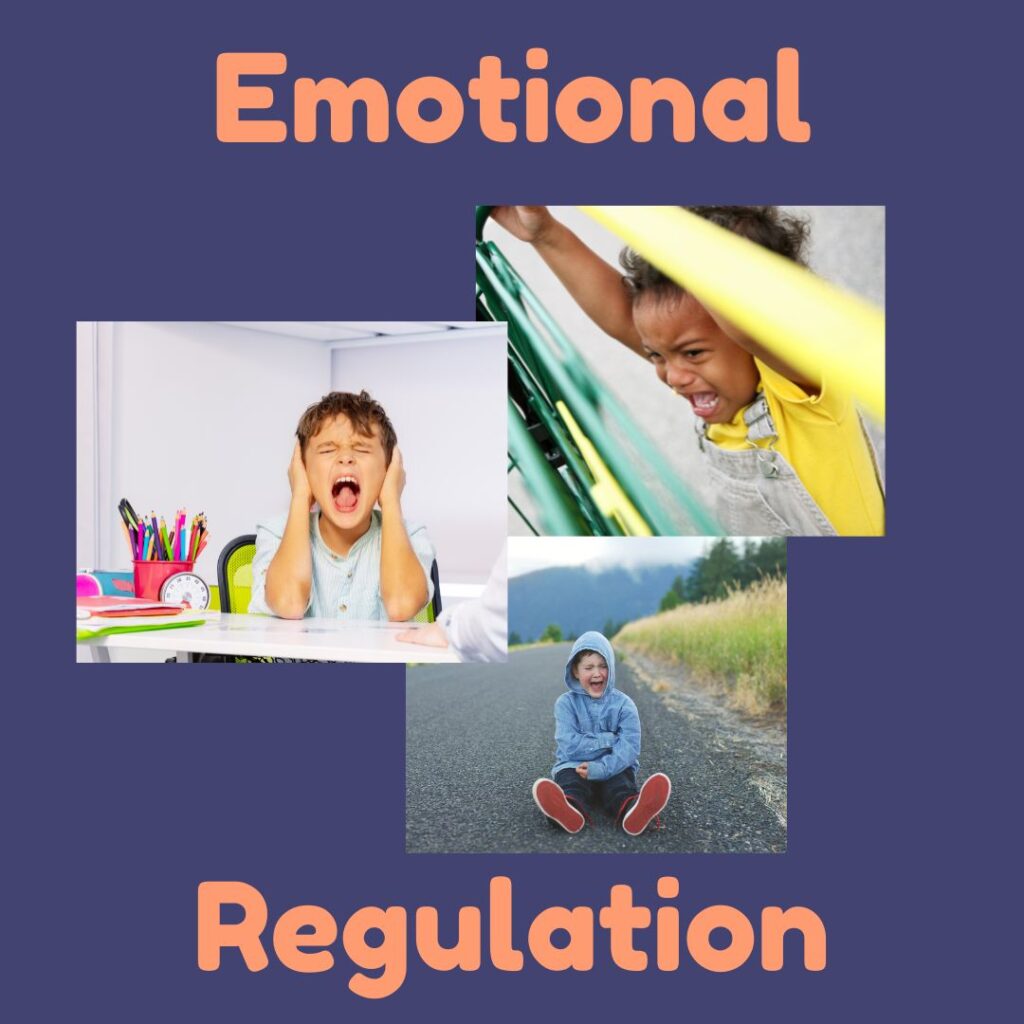
Permissive parenting may also lead to a feeling of needing to be in control of every part of life more than kids can handle based on their developmental level.
Sometimes parents think that unschooling is a good homeschool approach for kids with emotional regulation issues. A child-directed learning environment can be successful when the teaching parent studies and is able to smoothly facilitate learning through a collaborative relationship.
Unfortunately, much of the time unschooling turns into “not schooling,” and the child ends up doing passive activities, like watching or playing without stimulation that encourages growth in cognitive or academic skills. Kids don’t know what they don’t know. Then they can become addicted to technology or boredom sets in. Then behaviors can become a nightmare when any type of structure is enforced.
For the most part, a relaxed structure that includes a somewhat flexible routine with positive encouragement tends to help a child learn emotional regulation. Each homeschool may look different, but the give and take between the homeschool parent and the child through a supported relationship will help any child to gain executive function skills that will last into adulthood.
Why are executive functions important?
The eight common executive functions help students to become efficient and effective learners. When kids have neurodivergent brains that interfere with executive functions, academic skills and content become more difficult. The thinking skills to work through everyday life and be social can also be hindered.
If you have a child with executive function issues, like the Unique Learners social media page to find out ways to help. If you want help in your specific situation, you are welcome to message Sue at sueh@uniquelearners-suehegg.com to find out strategies you can try with your own unique learner.
